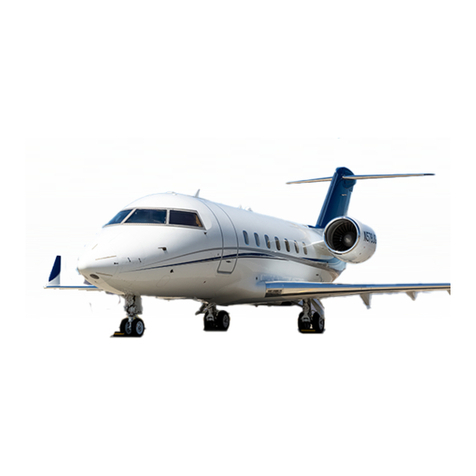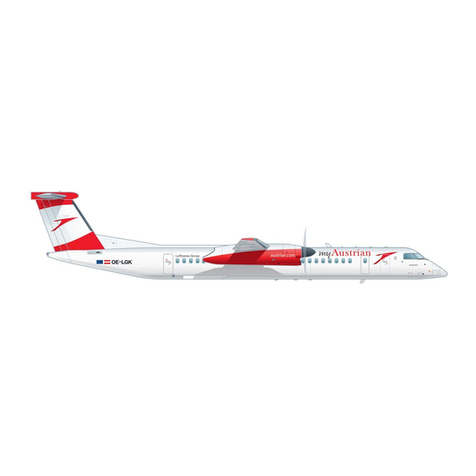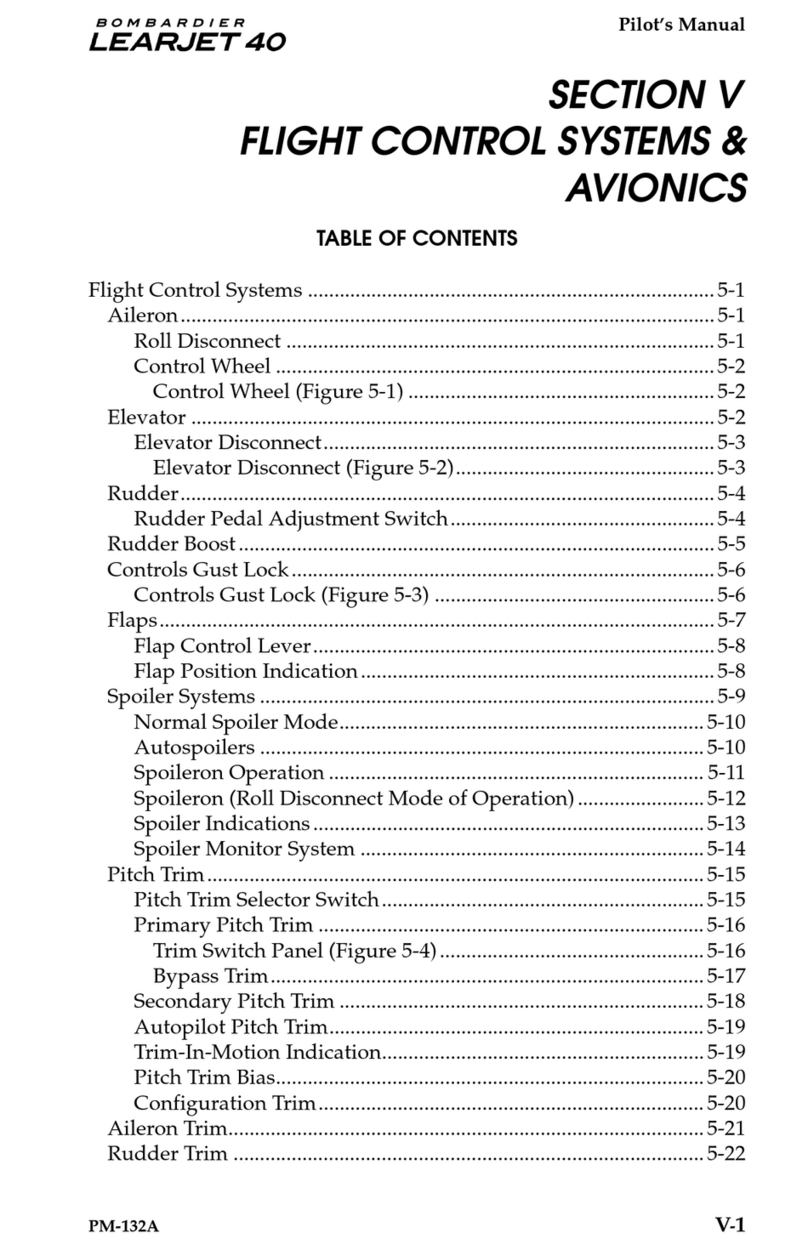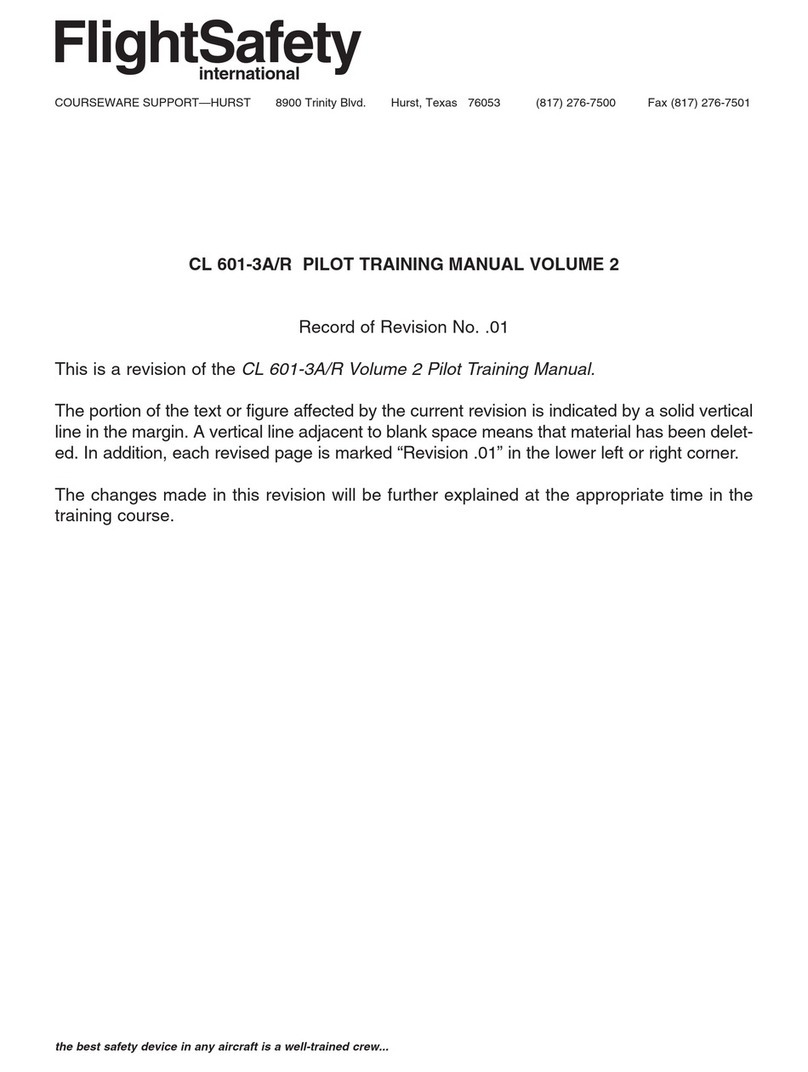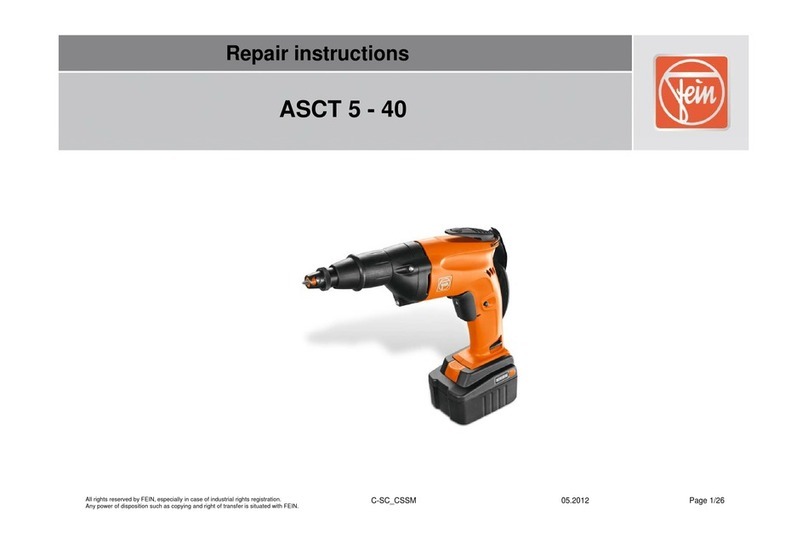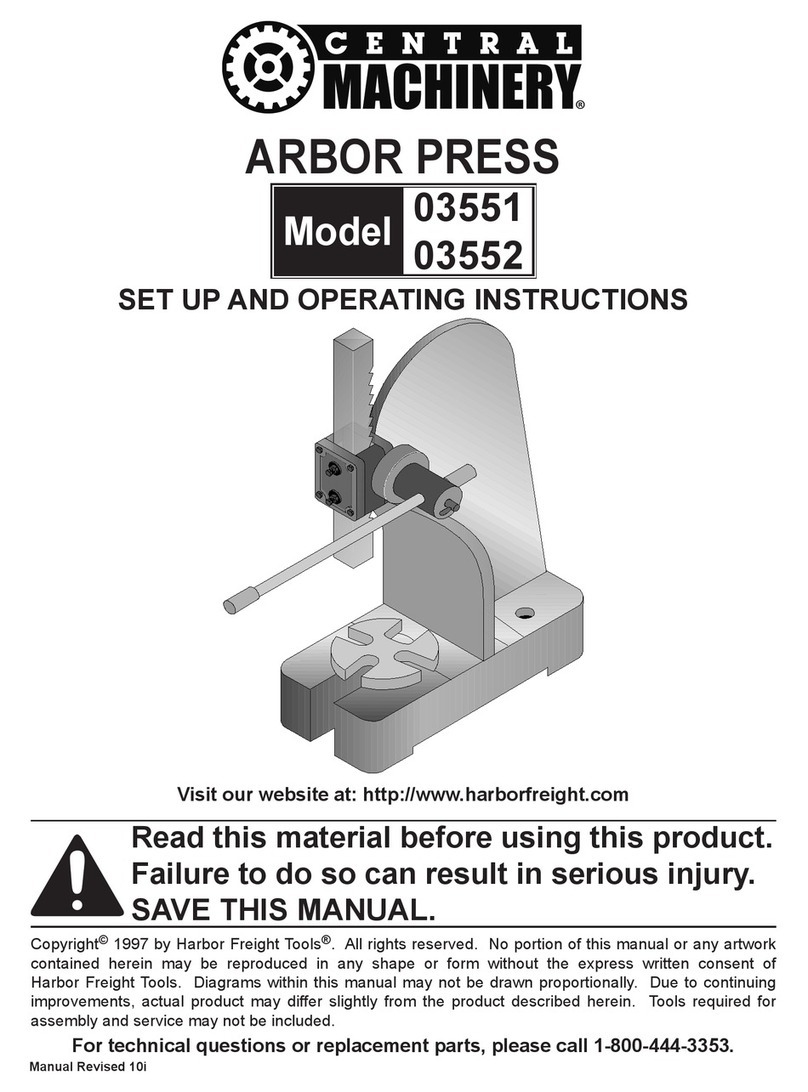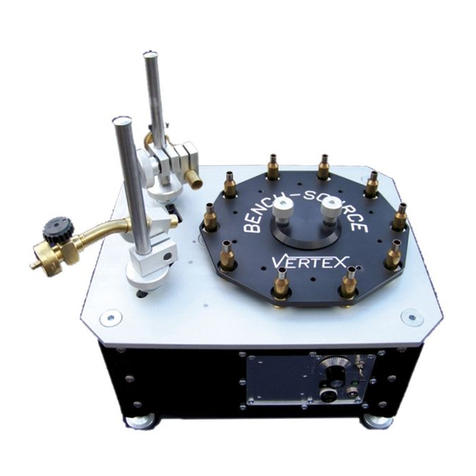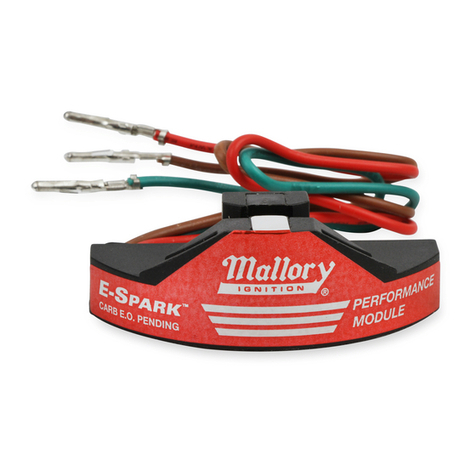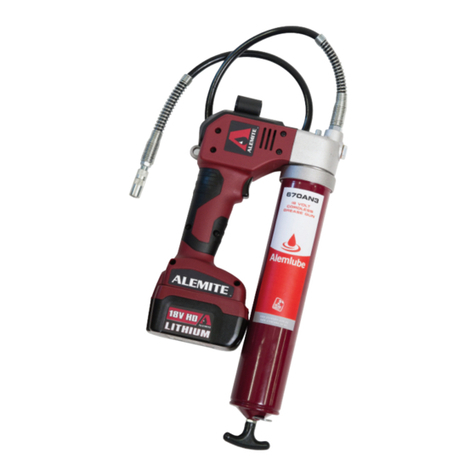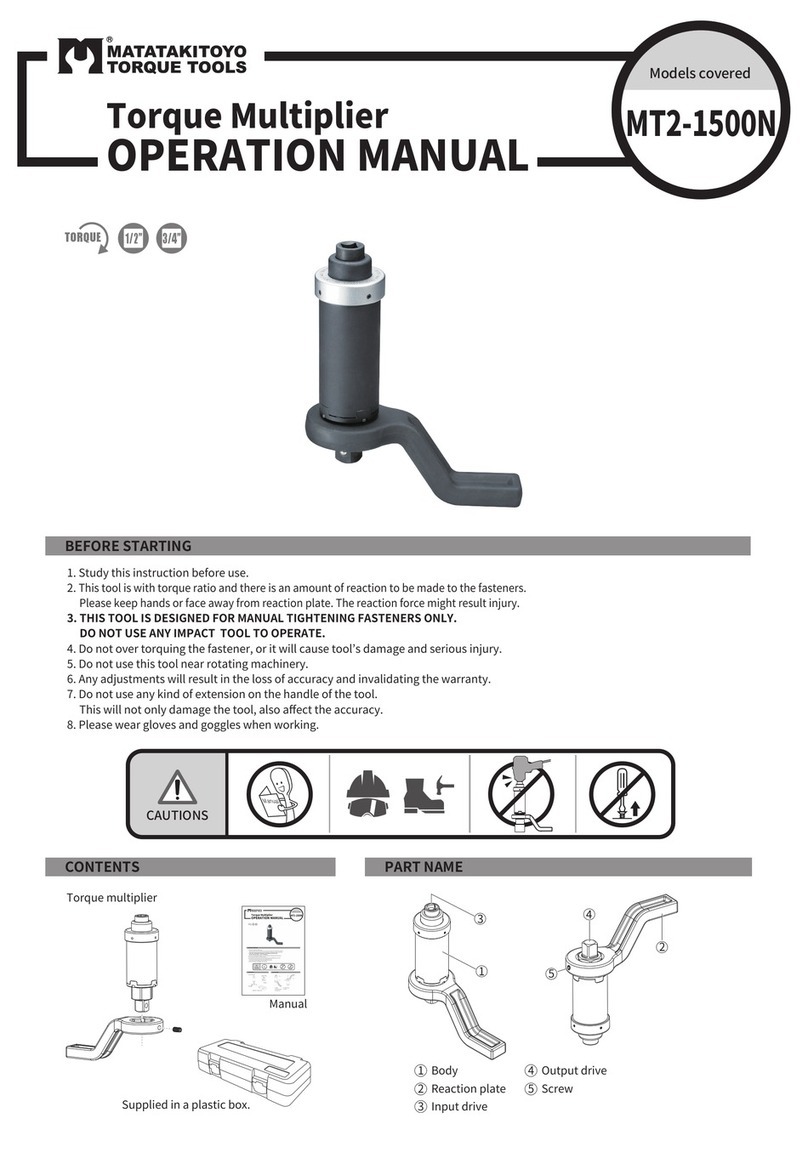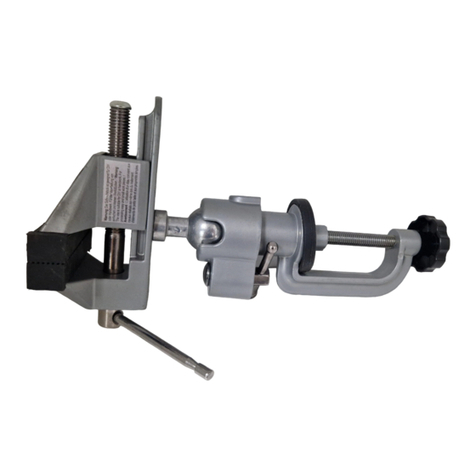BOMBARDIER LEARJET 45 Manual

Pilot’s Manual
PM-126A I-1
TABLE OF CONTENTS
Aircraft General Description....................................................................1-1
Airplane Three-View (Figure 1-1)........................................................ 1-2
General Arrangement — Exterior (Figure 1-2)..................................1-3
Cabin Entry Door ..................................................................................... 1-5
Entry Door Annunciations ................................................................... 1-6
Cabin Door Operation........................................................................... 1-8
To Open Cabin Door From the Outside......................................... 1-8
Opening Cabin Door (From Outside) (Figure 1-3)....................... 1-8
To Close Cabin Door From the Inside............................................1-9
Closing Cabin Door
(Lower Door From Inside) (Figure 1-4) ......................................... 1-9
Closing Cabin Door
(Upper Door From Inside) (Figure 1-5) .......................................1-10
Cabin Door Closed and Latched Verification ............................. 1-11
Cabin Door Latch Pin Sight Windows (Figure 1-6) ................... 1-11
To Open Cabin Door From the Inside.......................................... 1-13
Opening Cabin Door (From Inside) (Figure 1-7)........................1-13
To Close Cabin Door From the Outside....................................... 1-14
Closing Cabin Door (From the Outside) (Figure 1-8)................ 1-14
Emergency Exits ...................................................................................... 1-15
Left Forward Emergency Exit ............................................................ 1-15
Left Forward Emergency Exit Operation ......................................... 1-16
Left Forward Emergency Exit Operation (Figure 1-9).................... 1-16
Right Aft Emergency Exit Hatch ....................................................... 1-17
Aft Emergency Exit Security Pin (Figure 1-10)................................ 1-17
Right Aft Emergency Exit Hatch Operation ....................................1-18
To Open/Remove the Right Aft Emergency Exit
From the Inside .................................................................................... 1-18
Emergency Exit Hatch Operation (From Inside) (Figure 1-11) ..... 1-18
To Open/Remove the Emergency Exit Hatch
From the Outside ................................................................................. 1-19
Emergency Exit Hatch Operation
(From the Outside) (Figure 1-12) ....................................................... 1-19
Installing the Right Aft Emergency Exit Hatch
From the Inside .................................................................................... 1-20
Right Aft Emergency Exit Annunciations........................................1-20
SECTION I
GENERAL DESCRIPTION

Pilot’s Manual
I-2 PM-126A
TABLE OF CONTENTS (Cont)
External Doors......................................................................................... 1-21
Baggage Compartment Door............................................................. 1-21
Tailcone Access Door .......................................................................... 1-21
External Doors Annunciations .......................................................... 1-21
External Service Doors........................................................................ 1-21
Oxygen Service Door ..................................................................... 1-21
Fuselage Fuel Gravity Fill Access Door ...................................... 1-22
Single-Point Pressure Refueling Access Door ............................ 1-22
Single-Point Pressure Refueling Control Panel Access Door... 1-22
Oil Servicing Doors ........................................................................ 1-22
Turning Radius (Figure 1-13)............................................................. 1-23
Danger Areas (Figure 1-14) ................................................................ 1-24
Instrument Panel (Typical) (Figure 1-15) ......................................... 1-25
Pedestal (Typical) (Figure 1-16) ......................................................... 1-27
Pilot’s Circuit Breaker Panel (Typical) (Figure 1-17) ...................... 1-29
Copilot’s Circuit Breaker Panel (Typical) (Figure 1-18) ................. 1-31

Pilot’s Manual
PM-126A 1-1
AIRCRAFT GENERAL DESCRIPTION
The Learjet 45 aircraft, manufactured by Learjet Inc., is an all metal,
pressurized, low-wing, turbofan-powered monoplane. The high-aspect
ratio, fully cantilevered, swept-back wings with winglets are of conven-
tional riveted construction except for the upper section of the winglets,
which utilize full-depth honeycomb core bonded to the outer skin. The
fuselage is of semimonocoque construction and utilizes a constant cir-
cular cross sectional shape across the upper fuselage half and an elon-
gated cross sectional shape in the lower fuselage. The constant upper
circular section extends back to the aft pressure bulkhead where it is
faired into the tailcone. Two inverted “V” ventral fins (delta fins) are fit-
ted to the aft section of the tailcone to provide the aircraft with
favorable stall recovery characteristics and additional lateral/
directional stability.
Thrust is provided by two pod-mounted TFE-731-20 turbofan engines
manufactured by Honeywell. Independent fuel systems supply fuel to
the engines with fuel storage provided in wing and fuselage tanks. En-
gine-driven hydraulic pumps provide hydraulic power for braking, ex-
tending or retracting the landing gear, wing flaps, spoilers, and thrust
reversers. The landing gear system is a fully retractable tricycle-type
trailing link landing gear with dual main gear wheels, nose-wheel
steering, and a brake-by-wire brake control/anti-skid braking system.
The ailerons, rudder, and elevator are manually controlled through
cables, bellcranks, pulleys, and push-pull tubes. An electrically-
actuated trim tab is installed on the left aileron and on the rudder to
provide lateral and directional trim. Longitudinal trim is accomplished
by changing the incidence of the horizontal stabilizer with an
electrically-operated linear actuator. Aircraft air conditioning systems
which include an air cycle machine, provide heating, cooling, and
pressurization for the cockpit, passenger compartment and aft lavatory.
SECTION I
GENERAL DESCRIPTION

Pilot’s Manual
1-2 PM-126A
A06-0002
F45-000000-101
AIRPLANE THREE-VIEW
Figure 1-1
NOTE: All dimensions shown
for aircraft in static position.
58 ft 5 in
(17.81 m)
9 ft 4 in
(2.85 m)
47 ft 10 in
(14.58 m)
54 ft 0 in
(16.46 m)
17 ft 2 in
(5.24 m)
14 ft 1 in
(4.29 m)

Pilot’s Manual
PM-126A 1 - 11/ 1 - 12 (Blank)
GENERAL ARRANGEMENT —EXTERIOR
Figure 1-2
1-3/ 1-4 (Blank)


Pilot’s Manual
PM-126A 1-5
CABIN ENTRY DOOR
The cabin door is located in the forward left side of the fuselage. The
cabin door is a clamshell style design which consists of an upper door
section which opens upward to form a canopy while open, and a lower
door section with integral steps which opens downward. A retractable
flip step is installed on the lower cabin door which is rotated down to
form the lowest entry step. The cabin door is 30 inches (76 centimeters)
wide and provides normal entrance to and egress from the aircraft. The
upper cabin door also doubles as the left forward emergency exit.
The upper cabin door features handles on both the inside and outside
of the door. The outside upper door handle is recessed and protrudes
slightly from the door skin. Before operating the outside handle the
security keylock must be unlocked and the handle must be first lifted
out from the door, then rotated clockwise into the open position. The
inside upper door handle is readily accessible and can be rotated to lock
or unlock the upper door mechanism. The upper door is equipped with
a pair of gas struts which aid when raising the door. The gas struts will
maintain the door in the open position after it is raised. A key lock is
installed on the outside of the upper door to secure the aircraft from the
outside. Rotating the key lock will prevent the outer upper door handle
mechanism from moving into the open position. The security lock can
be easily overridden from inside the aircraft.
A vent door and locking mechanism is incorporated into the upper
cabin door. If the upper cabin door is not closed with the locking pins
engaged, the vent door will remain open to prevent the airplane from
pressurizing. The vent door is connected to the upper door handle
mechanism through a series of bell cranks and link rods which will
keep the vent door closed while the upper door handle is in the closed
position. As the upper door handle is rotated out of the closed position
the vent door will open and remain open while the handle is in
transition. When the handle is in the fully open position the vent door
will close. The vent door will remain closed while the upper cabin door
is open to prevent ice and moisture contamination.
The lower cabin door is equipped with a single locking handle which is
installed in the upper edge of the door as it is viewed in the closed po-
sition. The handle can be lifted out of the recess and rotated forward to
latch the door, or aft to unlatch the lower cabin door. Gas struts are in-
stalled on the forward lower door structure to aid in closing and
prevent damage if the door is inadvertently allowed to drop open.

Pilot’s Manual
1-6 PM-126A
CABIN ENTRY DOOR (CONT)
A cable and knob assembly is attached to the forward side of the lower
door frame.The cable and knob assembly is used to raise and lower the
lower door from inside the cabin. When closing the lower cabin door, a
secondary latch will automatically engage and hold the lower door in
position against the door seal until the lower door handle is rotated
forward to the locked position. If the handle is not rotated to latch the
door and the door is left in position by the secondary latch, the upper
door will be prevented from closing due to a pin which extends out-
board from the lower door just below the handle.
When the locking handle on the lower door is rotated forward, the
latching mechanism drives four pins into the fuselage frame, securing
the lower door. The inside and outside handles on the upper cabin door
are secured to a common shaft within the door. When either upper door
handle is rotated to the closed position, six latching pins are driven into
the fuselage structure and two pins are driven from the upper door into
overlapping halves in the lower door. There are a total of eight pins
installed in the upper door. Two of the six upper door latching pins are
driven through both the fuselage structure and through interlocking
arms on the lower door, which secure the doors together.
When the cabin entry door pins are engaged (there are twelve pins
total, eight in the upper door, four in the lower door), the door becomes
a rigid structural member. Correct pin engagement may be checked
using the small sight windows installed in the upper and lower inner
door panels. Sight windows are provided to check pin engagement for
ten of the latch pin locations, for two middle lock pins and for the lower
lock (pawl).
ENTRY DOOR ANNUNCIATIONS
All of the twelve cabin door latching pins are installed so they contact
a microswitch when the pin is fully engaged. If any of these pins do not
make contact when the upper door handle is closed, a red ENTRY
DOOR warning light is displayed on the Crew Warning Panel (CWP)
and a red ENTRY DOOR message on the Engine Indicating and Crew
Alerting System (EICAS) illuminates to provide the crew with visual
indication of cabin door security.

Pilot’s Manual
PM-126A 1-7
ENTRY DOOR ANNUNCIATIONS (Cont)
A white ENTRY DOOR PIN message will illuminate on the CAS
whenever the aircraft is on the ground and the cabin door pins are not
all fully engaged or all not fully disengaged. The ENTRY DOOR CWP
message will be simultaneously displayed with the ENTRY DOOR PIN
CAS message. If the keylock on the upper cabin entry (forward
emergency exit) door is locked and electrical power is applied to the
aircraft the red ENTRY DOOR light on the CWP will illuminate steady
to prevent operations with the emergency exit locked. The red ENTRY
DOOR and white ENTRY DOOR PIN CAS messages will also be
displayed on the EICAS when the aircraft is in this configuration.
If the DOOR circuit breaker on the pilot’s circuit breaker panel is out,
the red ENTRY DOOR CWP annunciator and the red ENTRY DOOR
and white ENTRY DOOR PIN CAS messages will all be displayed at
the same time.

Pilot’s Manual
1-8 PM-126A
CABIN DOOR OPERATION
To open the cabin door from the outside:
1. Insert the key in the key lock and rotate to unlock.
2. Lift the upper door handle out and rotate the handle clockwise
with both hands to the stop, releasing the door latch pins.
3. Raise the upper door by hand until the gas struts automatically
raise the door up and hold it fully open.
4. While holding the lower door, reach inside and rotate the lower
door locking handle aft (clockwise) to the OPEN position.
5. Lift the lower door secondary latch lever, located on the
forward side of the door frame, to release the lower door.
6. Gently lower the door to the open position, the flip-down step
will self deploy into the extended position.
OPENING CABIN DOOR (FROM OUTSIDE)
Figure 1-3
A52-1032

Pilot’s Manual
PM-126A 1-9
CABIN DOOR OPERATION (CONT)
To close cabin door from the inside:
The flip-down step could cause injury to the hand or
fingers if it is allowed to suddenly swing down into
the stowed position. The flip-down step must be
grasped firmly as the door is raised, and lowered by
hand before the step nears the vertical position.
1. Raise the lower door using the cable and knob until the lower
door is within reach. Immediately grasp the flip-down step,
before it falls inward and lower it by hand into the stowed
position against the inside of the lower door.
2. Pull the lower door against the door seal until the secondary
latch engages, the secondary latch will hold the door in place.
Release the cable and knob and allow the cable to retract,
stowing the knob on forward side of the door frame.
3. Rotate the lower door handle forward (counterclockwise) to the
locked position.
CLOSING CABIN DOOR
(LOWER DOOR FROM INSIDE)
Figure 1-4
WARNING
A52-1037

Pilot’s Manual
1-10 PM-126A
CABIN DOOR OPERATION (CONT)
4. Pull the upper door down until the upper door handle is within
reach.
5. With the upper door handle in the OPEN position (with the
handle pointing up), pull the door tightly against the door seal
and rotate the locking handle forward (clockwise) to the locked
position. (If preparing for flight, check that the ENTRY DOOR
warning annunciator light on the CWP is extinguished and the
ENTRY DOOR and ENTRY DOOR PIN messages on the CAS
are extinguished.)
6. Inspect the cabin door sight windows, located on the inside of
the upper and lower door panels, to ensure that all of the
latches and locks are properly engaged. The sight windows
should appear in the safe condition as shown in Figure 1-6
CABIN DOOR LATCH PIN SIGHT WINDOWS.
CLOSING CABIN DOOR
(UPPER DOOR FROM INSIDE)
Figure 1-5
A52-1037

Pilot’s Manual
PM-126A 1 - 11/ 1 - 12 (Blank)
UNSAFE
CONDITION
SAFE
CONDITION
6 PLACES
SAFE
CONDITION
2 PLACES
UNSAFE
CONDITION
MIDDLE LOCK PIN SIGHT WINDOWS
UNSAFE
CONDITION
SAFE
CONDITION
1 PLACE
SAFE
CONDITION
4 PLACES
UNSAFE
CONDITION
LOWER CABIN DOOR
LATCH PIN SIGHT WINDOWS
VIEW: LOOKING OUTBOARD AT THE UPPER CABIN DOOR
VIEW: LOOKING OUTBOARD AT THE LOWER CABIN DOOR
A25-1036
CABIN DOOR LATCH PIN SIGHT WINDOWS
Figure 1-6
CABIN DOOR OPERATION (CONT)
Cabin Door Closed and Latched Verification:
The cabin door is equipped with thirteen sight windows located in the
cabin door panels (nine in the upper door and four in the lower door).
The sight windows allow verification from inside the cabin that the
cabin door pins are properly engaged with the fuselage structure and
that the lower lock and middle lock pins are properly engaged.
Visually inspect all sight windows. Ensure the windows match the
following safe condition examples to verify proper lock and latch pin
engagement.


Pilot’s Manual
PM-126A 1-13
CABIN DOOR OPERATION (CONT)
To open cabin door from the inside:
1. Lift the upper door locking handle into the OPEN position.
2. Push the upper door outward and up allowing the door struts
to raise the upper door to the fully open position.
3. Rotate the lower door locking handle aft (clockwise) to the
OPEN position.
4. Grasp the cable knob, pull out any slack in the cable and while
holding tension on the cable, release the secondary latch located
on the forward side of the door frame.
5. Lower the lower door into the fully open position with the cable
and knob, the flip-down step will pivot out into the deployed
position as the door is lowered. Stow the knob on the forward
side of the door frame.
OPENING CABIN DOOR (FROM INSIDE)
Figure 1-7
A52-1036

Pilot’s Manual
1-14 PM-126A
CABIN DOOR OPERATION (CONT)
To close the cabin door from the outside:
1. Pivot the flip-down step upward until the step rests against the
lower door.
2. Raise the lower door until it is against the door seal and
secondary latch engages.
3. Reach inside and rotate the lower door handle forward
(counterclockwise) to the locked position.
4. With the upper door handle in the OPEN position, pull the
upper door down and hold it tightly against the door frame.
5. While holding the upper door closed, rotate the upper door
handle counterclockwise to the stop with both hands.
6. Release the upper door handle and ensure the handle retracts
into position against the door skin.
CLOSING CABIN DOOR (FROM THE OUTSIDE)
Figure 1-8
A52-1038

Pilot’s Manual
PM-126A 1-15
EMERGENCY EXITS
LEFT FORWARD EMERGENCY EXIT
The upper portion of the cabin entry door serves as the left forward
emergency exit. The upper cabin entry door/left forward emergency
exit is secured to the fuselage by six latching pins which extend from
the left forward emergency exit into the fuselage structure and by two
latching pins which are driven from the left forward emergency exit
into an overlapping section in the lower cabin entry door. The pins are
extended and retracted by the upper cabin door handles (on the inside
and outside of the cabin door) which operate a common shaft.
Because the upper door is equipped with a keylock, it must be
unlocked before flight to ensure optimum operation as an emergency
exit. However, in the event that the keylock is locked, an override bar
is installed on the inside of the door, above the door handle. When
depressed outboard, the override bar will disable the locking function
and allow the inboard handle to unlatch the left forward emergency
exit. To open the left forward emergency exit from inside, the upper
cabin door handle is rotated up (counterclockwise) into the OPEN
position and the upper door is pushed open. The lower cabin door is
kept closed. Keeping the lower door closed will also provide a greater
safety factor in the event of ditching.

Pilot’s Manual
1-16 PM-126A
LEFT FORWARD EMERGENCY EXIT OPERATION
To open from the inside:
1. Lift the upper cabin door handle (rotate counterclockwise) into
the OPEN position.
2. Push the upper door outward and up allowing the door struts
to raise the upper door to the fully open position.
3. Leave the lower cabin door in place and exit through the open
upper cabin door.
LEFT FORWARD EMERGENCY EXIT OPERATION
Figure 1-9
To open from the outside:
1. Lift the upper cabin door handle out and rotate the handle
clockwise with both hands to the stop, releasing the upper door
locking pins.
2. Raise the upper door by hand until the gas struts automatically
raise the door up and hold it fully open.
3. Leave the lower cabin door in place and gain access through the
open upper cabin door.
A52-1036

Pilot’s Manual
PM-126A 1-17
RIGHT AFT EMERGENCY EXIT HATCH
The emergency exit hatch is located on the right aft side of the cabin
near the leading edge of the wing, adjacent to the right aft passenger
seat. It provides egress from the cabin in the event of an emergency. The
hatch is secured to the airframe by two spring-loaded pins which
extend from the top of the hatch into the fuselage structure. The hatch
is designed as a plug type hatch which opens inward only, and is held
in the closed position by pressurization forces and the spring loaded
pins. The emergency exit hatch is 20 inches (51 centimeters) wide by 36
inches (91 centimeters) high and functions as a Type III escape hatch.
A security pin can be installed on the inside of the emergency exit hatch
to prevent unauthorized entry from the outside. The security pin is
inserted from the inside to lock one of the spring loaded hatch pins in
place. The security pin has a small flag attached which states REMOVE
BEFORE FLIGHT.
AFT EMERGENCY EXIT SECURITY PIN
Figure 1-10
A52-1033

Pilot’s Manual
1-18 PM-126A
RIGHT AFT EMERGENCY EXIT HATCH OPERATION
To open/remove the right aft emergency exit from the inside:
1. Remove the handle cover from the emergency exit hatch to fully
expose the emergency exit handle. The cover is attached with
hook and loop fasteners and can be easily pulled from the
hatch.
2. Grasp the emergency exit handle placarded EXIT-PULL and
pull it fully toward you and up, retracting the hatch pins.
3. While holding the emergency exit handle in the retracted
position, tilt the top edge of the hatch inward.
4. Grasp the hatch in the armrest recess with the opposite hand
and lift the hatch inward and up from the fuselage structure.
5. Lean the top of the hatch inward and rotate the hatch onto its
edge.
6. Pass the hatch through the emergency exit opening to the
outside of the aircraft.
EMERGENCY EXIT HATCH OPERATION (FROM INSIDE)
Figure 1-11
EXIT-PULL
EXIT-PULL
EMERGENCY DOOR
EMERGENCY DOOR
PUSHTOOPEN
PUSH TO OPEN
DOOROPENSINWARD
DOOR OPENS INWARD
Table of contents
Other BOMBARDIER Tools manuals
